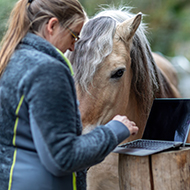Chaffinch numbers continue to decline, bird survey finds
Trichomonosis has impacted both the chaffinch and bullfinch over the past five years.
The results of the latest Breeding Bird Survey (BBS) have revealed a number of woodland and farmland birds have been struggling with population numbers.
Among the woodland and garden species that demonstrated worrying declines were the chaffinch and the bullfinch.
Data from the BBS, a collaboration between BTO, JNCC and RSPB, reveals that the chaffinch population has dropped by nearly 40 per cent in the past 10 years. Trichomonosis had impacted both the chaffinch and the bullfinch, declining populations by a third and 40 per cent respectively in the past five years.
Farmland birds such as the yellowhammer and yellow wagtail have also struggled. The yellowhammer has had a UK-wide decline of a third since 1995, while numbers of yellow wagtails have dropped by more than half in England over the same period.
The bird species which recorded the greatest decline was the turtle dove, with numbers dropping by 98 per cent since 1995. This was closely followed by the willow tit, which has declined by 90 per cent.
Since 1995, the first year from which BBS trends can be calculated, 43 of the 119 bird species monitored have decreased.
There were better results for 36 other bird species, however, which have seen population increases. This included the skylark and the corn bunting, which saw increases of nearly 20 per cent and 38 per cent respectively in the past decade.
Successful reintroduction programmes have already seen the little egret increase by 2,726 per cent and the red kite grow by 2,464 per cent. The ring-necked parakeet, an invasive non-native species, has also increased by 2,406 per cent in the past 28 years.
There was also positive news for a range of other birds, included the firecrest, the marsh harrier and the cuckoo.
Although the cuckoo is still struggling in the lowland parts of the UK, it is faring better in the uplands and across Scotland. The BBS report shows that cuckoo numbers had increased by 67 per cent since 1994 in Scotland.
The cuckoo continues to see great losses in England, however, where numbers have declined by 71 per cent – meaning they have declined by approximately a third across the UK.
Simon Wotton, RSPB senior conservation scientist, said: “The UK’s wildlife is better studied than in any other country in the world and what the data are telling us is that the UK's bird species are mostly in long term decline. This latest report once again shows that our farmland and woodland birds are in a particularly precarious position.
“What is clear, is that progress to protect our species and habitats has not been sufficient and yet we know we urgently need to restore nature now.”
Image © Shutterstock



 With Strangles Awareness Week just around the corner (5-11 May), vets are being encouraged to share a survey about the disease with their horse-owning clients.
With Strangles Awareness Week just around the corner (5-11 May), vets are being encouraged to share a survey about the disease with their horse-owning clients.